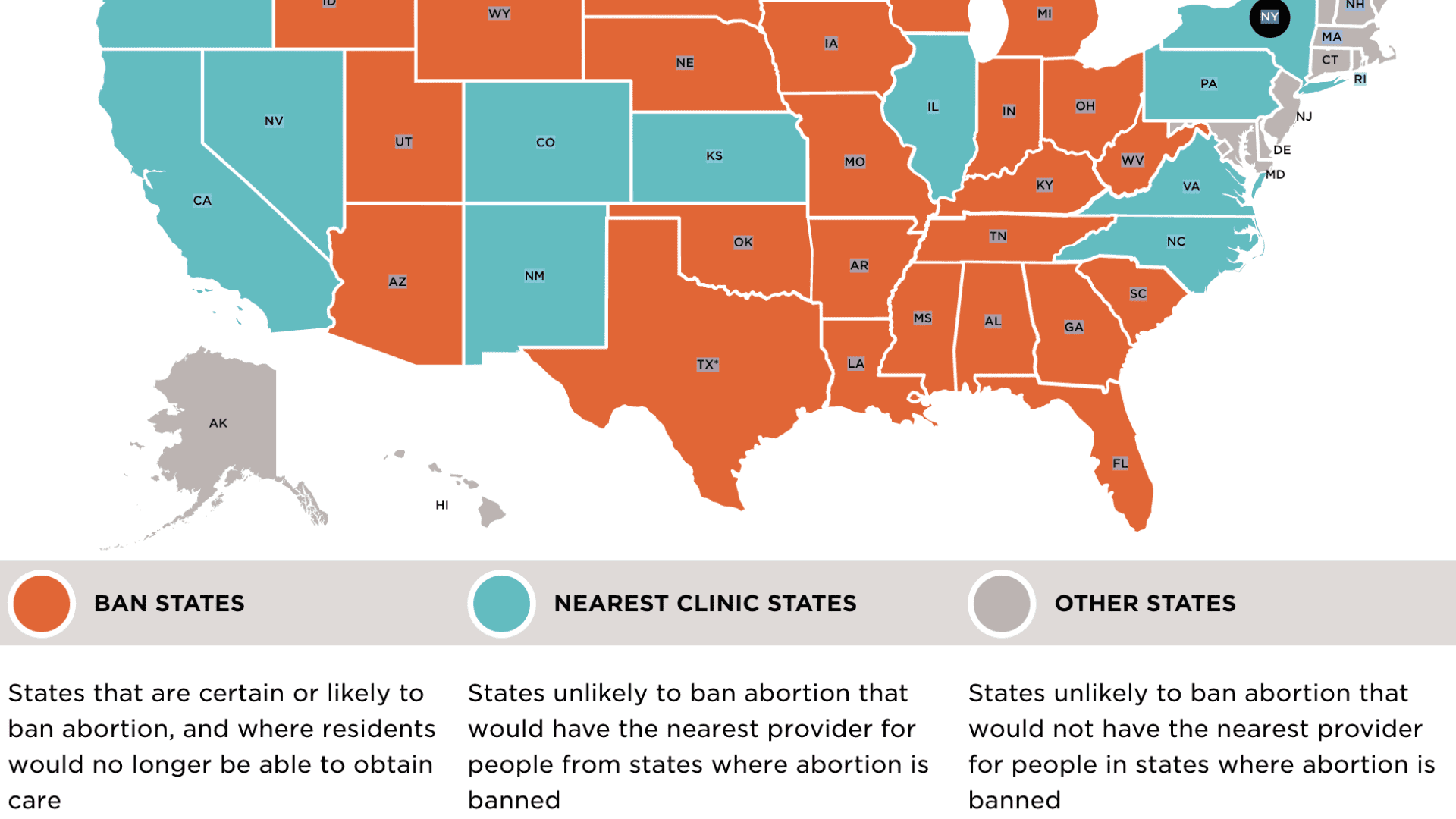
- Up to 26 states, or about half of the United States, are expected to quickly ban or severely limit abortions if the Supreme Court reverses its 49-year-old ruling in Roe v. Wade.
- That prediction from the Guttmacher Institute, issued in the fall, gained renewed attention with the leak of an initial draft of a Supreme Court decision that would reverse Roe and a related ruling, and thus eliminate the constitutional right to abortion.
- Chief Justice John Roberts confirmed the authenticity of the draft as reported by Politico, which, as of now at least, is not the official ruling of the court.
- But abortion rights advocates and Democratic lawmakers fear it soon will be, which would again allow individual states freedom to regulate abortion without the oversight of federal courts.
Up to 26 states, or about half of the United States, are expected to quickly ban or more severely limit abortions if the Supreme Court reverses its 49-year-old ruling in Roe v. Wade, according to a leading reproductive rights advocacy group.
That prediction from the Guttmacher Institute, issued last fall, gained renewed attention Tuesday with the leak of an initial draft of a Supreme Court decision that would reverse Roe and a related ruling, and thus eliminate the constitutional right to abortion.
Get top local stories in DFW delivered to you every morning. Sign up for NBC DFW's News Headlines newsletter.
Chief Justice John Roberts confirmed the authenticity of the draft as reported by Politico, which, as of now at least, is not the official ruling of the court.
But abortion rights advocates and Democratic lawmakers fear the court will soon issue a similar opinion. It would again allow individual states freedom to regulate abortion without the oversight of federal courts.
Money Report
"This is going to be devastating for abortion access across the country," said Elizabeth Nash, interim associate director of state issues at the Guttmacher Institute.
Nash said that 36 million women of reproductive age live in the 26 states that Guttmacher expects to automatically ban abortion, or considers likely to do so.
Those states are concentrated in the South, the Midwest, and the far West.

They include Texas and Florida, which together accounted for nearly 15% of the more than 862,000 abortions performed nationally in 2017.
Nash said nine of the states still have bans on abortion that predate the 1973 ruling by the Supreme Court in Roe v. Wade, which would again theoretically take effect with the repeal of the ruling.
Roe v. Wade barred outright prohibitions on abortion. It said a state could bar abortions only in the third trimester of pregnancy, and only then if they allowed exceptions for cases to save the life of the mother or to protect her health.
The nine states with pre-Roe bans are Alabama, Arizona, Arkansas, Michigan, Mississippi, North Carolina, Oklahoma, West Virginia and Wisconsin.
And 13 states on the list have passed so-called trigger laws that would ban abortion or further restrict it if Roe is overturned, Nash said.
Those states are Arkansas, Idaho, Kentucky, Louisiana, Mississippi, Missouri, North Dakota, Oklahoma, South Dakota, Tennessee, Texas, Utah and Wyoming.
Nash said that some of the states on Guttmacher's list of states on track to ban or severely limit abortion, including Michigan, North Carolina and Wisconsin, might not do so because they have governors who support abortion rights, along with other factors.
Nash noted that one in four American women will have an abortion in their lifetime.
"That means abortion is incredibly common, and when you see a state start to ban it, that means they are denying people access to health care," Nash said.
Guttmacher has an interactive map on its website that shows how far a woman in a given state needs to drive on average to obtain an abortion under current law, and how far they would need to drive if a ban went into place in their home state.
In Idaho, the current average driving distance would be 21 miles, one way. It would increase to 250 miles with a total ban on abortion in that state.
In Texas, which last year adopted a law barring abortions after six weeks of pregnancy, the average distance women would need to drive to get an abortion is 17 miles, one way. That would increase to 542 miles, one way, if a total ban is adopted there, as is considered certain if Roe is reversed.
Nash said that as a result of Texas' new law, "we're already seeing wait times in some [abortion] clinics increase to three and four weeks."
"Imagine what happens to clinic access if more states ban abortion," Nash said.
Guttmacher's data shows that there were more than 55,400 abortions performed in Texas alone in 2017, the last year that statistics are available.






